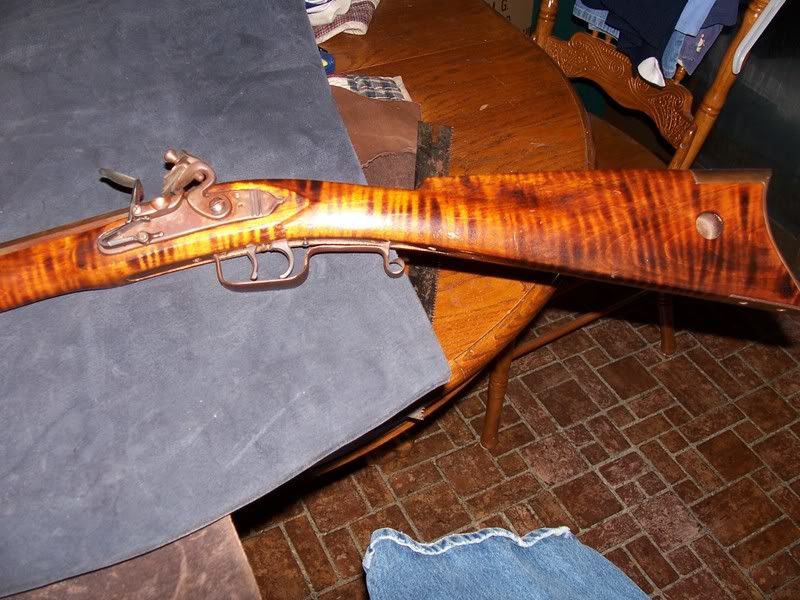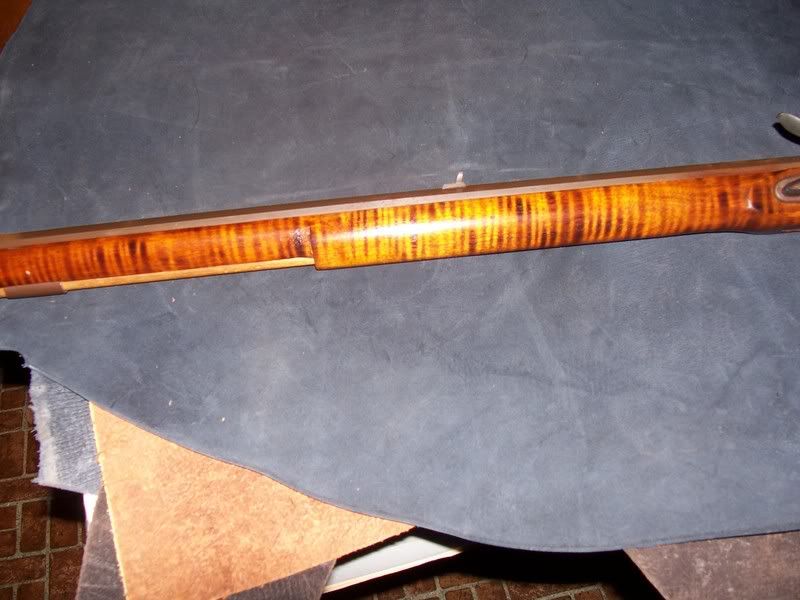kansas_volunteer
45 Cal.
Some of the old guns, and Leman trade rifles in particular, as I understand it, had fake tiger striping applied to plane maple. What would be some good ways to do that on a modern plain maple stock?

Zonie said:These bristles were cut off leaving about 1/8 inch wide bristles with a 3/16 inch or so gap between them (it varied some).
This created a pattern that seemed to repeat itself every so often.
He felt the stripes were painted onto the stock with a mixture of asphalt and turpentine to create the dark areas, then the wood was oiled or finished with a varnish.
zonie


Enter your email address to join: